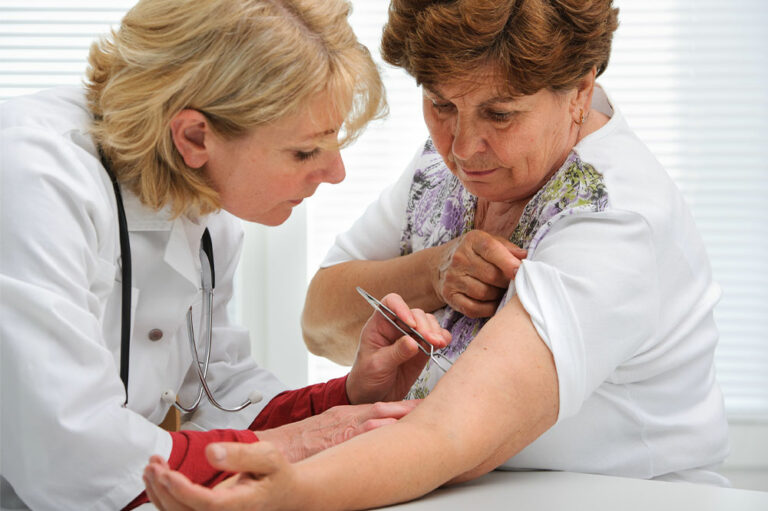Psoriasis is a common skin condition found to affect 8 million people in the country. There are several types of this condition, and plaque psoriasis is the most common of them all. Plaques can be identified as red and raised patches covered with a white buildup made up of dead skin cells known as scale. These patches are usually found on the elbows, scalp, lower back, knees, and elbows. However, plaques can affect any part of the body and cause itching and pain.
What is plaque psoriasis?
Plaque psoriasis is identified by scaly patches that appear on the skin. This is the most common type of psoriasis. Approximately 80% to 90% of psoriasis cases develop plaques. In some cases, people also develop more than one type of psoriasis. In the case of plaque psoriasis, the patient might also develop other conditions such as psoriatic arthritis. Due to psoriasis, patches of skin get damaged. This damage causes irritation and redness of the skin and makes the skin appear scaly, gray, and even lead to peeling.
What are the causes of plaque psoriasis?
Plaque psoriasis causes a faster than usual generation of cells and develops red patches and scales. Psoriasis is believed to be a problem generated due to a malfunctioning immune system. Because of this malfunctioning immune system, the skin starts to regenerate faster than its usual pace. However, the exact cause of the malfunctioning immune system is yet to be known. The researchers believe that genetics as well environmental factors can have a role to play in this.
Who can get plaque psoriasis?
The condition can affect anyone. However, several factors increase a person’s chances of developing the condition. These factors usually include:
- Genetics: Psoriasis is a condition that runs in the family. While having one parent with the condition can increase your chances of getting the condition, having both parents put you at a greater risk.
- Stress: Stress can adversely affect the immune system. Thus, it is believed to be one of the main risk factors of the condition.
Treatment plan
- Topical treatments
This is often the first line of defense against psoriasis. Here, the treatments are applied to the skin. Excessive cell reproduction is normalized, and inflammation caused by psoriasis is eased out.
Health professionals will determine the right topical therapy as per your condition.
Phototherapy
Several types of phototherapy might be used to ease the condition. These include the following.
- Ultraviolet light B (UVB)
UVB, which is present in natural sunlight, is a treatment option for psoriasis. It hinders the growth of affected skin cells by penetrating the skin. Treatments may include UVB phototherapy, excimer laser, or in-office or home UVB phototherapy.
- Psoralen + UVA (PUVA)
Ultraviolet light A combined with psoralen, a light-sensitizing agent, is also a treatment option for psoriasis.
- Oral treatments
When topical treatments or UV light therapy are not effective, doctors may prescribe oral treatments.
- Biologics
Biologics target specific parts of the immune system and help in easing psoriasis. Some biologics are disease-modifying antirheumatic treatment options that may slow the damage.












